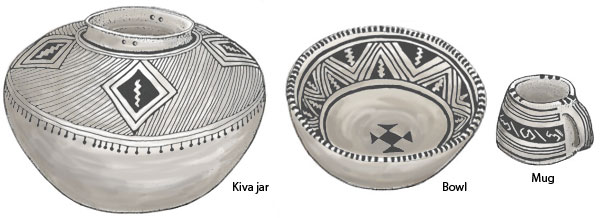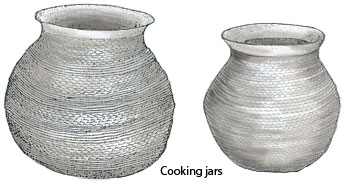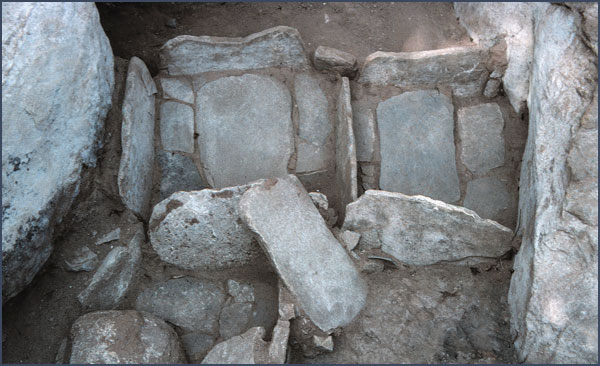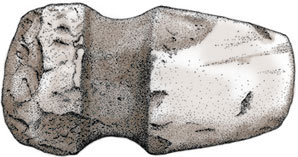Peoples of the Mesa Verde Region
The Pueblo III Period: A.D. 1150 to 1300Artifacts
The people of the Pueblo III period left behind a remarkable technological and artistic legacy. Though best known for their beautiful white ware pottery, people living during this time also created a multitude of tools and other artifacts out of stone, plant fibers, and animal remains. The painted pottery of the Pueblo III period is well known for its beautiful black-on-white designs and its outstanding craftsmanship. The vessels made during this time include many of the same forms seen during earlier periods, including bowls, jars, ollas, and dippers. In addition, however, two new forms—mugs and kiva jars—were made for the first, and only, time in Pueblo history. Many white ware vessels were very well polished and well slipped, resulting in a smooth, sometimes lustrous, surface. Painted designs were often elaborate, consisting of thick and thin parallel lines that "framed" broad bands filled with geometric shapes and areas of hachure. The rims of many white ware vessels were decorated with small dabs of paint in a technique called "rim ticking." 
Pueblo III white ware pottery vessels. The corrugated gray ware pottery during this period was similar to that of the Pueblo II period, except that the jar rims were more flared. No red ware pottery was made in the Mesa Verde region during the Pueblo III period, and almost no pottery or other goods from outside the region found their way to area sites. 
Pueblo III corrugated gray ware pottery vessels. Some of the most abundant stone artifacts dating from this time are those used to grind corn. Two-hand manos were very common, but they were used with slab metates, rather than with trough metates. As the name suggests, slab metates have a flat or nearly flat grinding surface. Slab metates were often used inside stone bins built specifically to hold the metate at the proper angle for grinding; these bins are called "metate bins" or, sometimes, "mealing bins." Metate bins are found in a variety of locations, including in rooms that apparently were used exclusively for the purpose of grinding corn. 
Metate bins inside a Pueblo III mealing room. At the bottom of each bin is a slab metate; a third metate is leaning against the bin on the left. Stone projectile points were still used with the bow and arrow to hunt game, but fewer projectile points are found at Pueblo III sites than at sites dating to earlier time periods. A very common stone tool dating from the Pueblo III period is the axe, which would have been hafted to a wooden handle. Some axes were used to chop trees for construction and firewood; others were used to clear sagebrush from agricultural fields. Some archaeologists believe that smaller axes may have been used as weapons. 
Pueblo III axe. At many Pueblo III sites located in alcoves, archaeologists have found artifacts that ordinarily would have decayed over time. Among the well-preserved objects found in cliff dwellings are sandals and baskets made of yucca, clothing made of cotton, mats and pouches made of reeds, and blankets made of turkey feathers. |
|
Acknowledgments | Illustration credits | To borrow, cite, or request permission | Please take our survey! Title page for Peoples of the Mesa Verde Region |
|
 DONATE TODAY
DONATE TODAY
